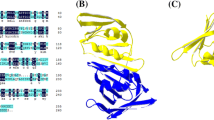Abstract
Autographa californica multiple nucleopolyhedrovirus (AcMNPV) is used as bac-to-bac eukaryotic protein expression system and biopesticide. However, AcMNPV isn’t widely used in protein expression system and biological control due to some drawbacks and it’s required to understand the function of AcMNPV genes comprehensively in the infection process. Ac132 is an improtant component of the budded virus (BV) nucleocapsid of AcMNPV and the function of Ac132 in regulating progeny virus generation is still unclear. In this study, the recombinant AcMNPV-Ac132-EGFP was constructed. Virus propagation assay indicated that overexpression of Ac132 could improve progeny virus production. Moreover, fluorescent microscope and western blot analysis showed AcMNPV-Ac132-EGFP could accelerate the aggregation of F-actin in the nucleus and delay the evacuation process. In addition, AcMNPV-Ac132-EGFP boosted the utilization of glucose in Sf9 cells at the aspect of energy metabolism. These results demonstrated that Ac132 played important roles in progeny virus production, F-actin formation, nucleocapsid transportion, and glucose metabolism in Sf9 cells, which provided an improved bac-to-bac eukaryotic protein expression system and biopesticide.
Similar content being viewed by others
References
Ayres, M. D., S. C. Howard, J. Kuzio, M. Lopez–Ferber, and R. D. Possee (1994) The complete DNA sequence of Autographa californica nuclear polyhedrosis virus. Virology 202: 586–605.
Wang, R., F. Deng, D. Hou, Y. Zhao, L. Guo, H. Wang, and Z. Hu (2010) Proteomics of the Autographa californica nucleopolyhedrovirus buddedvirions. J. Virol. 84: 7233–7242.
Braunagel, S. C., W. K. Russell, G. Rosas–Acosta, D. H. Russell, and M. D. Summers (2003) Determination of the protein composition of the occlusion–derived virus of Autographa californica nucleopolyhedrovirus. Proc. Natl. Acad. Sci. USA 100: 9797–9802.
Chen, Y. R., S. Zhong, Z. Fei, Y. Hashimoto, J. Z. Xiang, S. Zhang, and G. W. Blissard (2013) The transcriptome of the baculovirus Autographa californicamultiple nucleopolyhedrovirus in Trichoplusia ni cells. J. Virol. 87:6391–6405.
Rohrmann, G. F. and M. D. Bethesda (2013) Baculovirus molecular biology, 3rd ed. National Center for Biotechnology Information, National Library of Medicine.
Miele, S. A., M. J. Garavaglia, M. N. Belaich, and P. D. Ghiringhelli (2011) Baculovirus: molecular insights on their diversity and conservation. Int. J. Evol. Biol. 2011:379424.
Yang, M., S. Wang, X. L. Yue, and L. L. Li (2014) Autographa californica multiple nucleopolyhedrovirus orf132 encodes a nucleocapsid–associated protein required for budded–virus and multiply enveloped occlusion–derived virus production. J. Virol. 88: 12586–12598.
Fang, Z., C. Li, W. Wu, M. Yuan, and K. Yang (2016) The Autographa californica multiple nucleopolyhedro virus Ac132 plays a role in nuclear entry. J. Gen. Virol. 97:3030–3038.
Young, J. C., E. A. MacKinnon, and P. Faulkner (1993) The architecture of the virogenic stroma in isolated nuclei of Spodoptera frugiperda cells in vitro infected by Autographa californica nuclear polyhedrosis virus. J. Struct. Biol. 110: 141–153.
Fu, Y. J., T. T. Lin, A. H. Liang, and F. Hu (2016) Effects of recombinant baculovirus AcMNPV–BmK IT on the formation of early cables and nuclear polymerization of actin in Sf9 cells. Cytotechnology 68: 381–387.
Au, S., W. Wu, L. Zhou, D. A. Theilmann, and N. Panté (2016) A new mechanism for nuclear import by actin–based propulsion used by a baculovirus nucleocapsid. J. Cell Sci. 129: 2905–2911.
Hepp, S. E., G. M. Borgo, S. Ticau, T. Ohkawa, and M. D. Welch (2018) Baculovirus AC102 is a nucleocapsid protein that is crucial for nuclear actin polymerization and nucleocapsid morphogenesis. J. Virol. 92: 11–17.
Zhang, Y., X. Hu, J. Mu, Y. Hu, Y. Zhou, H. Zhao, C. Wu, R. Pei, J. Chen, X. Chen, and Y. Wang (2018) Ac102 participates in nuclear actin polymerization by modulating BV/ODV–C42 Ubiquitination during Autographa californica multiple nucleopolyhedrovirus infection. J Virol. 92:12–14.
Xiao, W., Y. Yang, Q. Weng, T. Lin, M. Yuan, K. Yang, and Y. Pang (2009) The role of the PI3K–Akt signal transduction pathway in Autographa californica multiple nucleopolyhedrovirus infection of Spodoptera frugiperda cells. Virology 391: 83–89.
Author information
Authors and Affiliations
Corresponding author
Rights and permissions
About this article
Cite this article
Peng, Y., Liang, A. & Fu, Y. Function and Application Analysis of Ac132 Protein in Autographa californica Multiple Nucleopolyhedrovirus. Biotechnol Bioproc E 23, 655–661 (2018). https://doi.org/10.1007/s12257-018-0364-8
Received:
Revised:
Accepted:
Published:
Issue Date:
DOI: https://doi.org/10.1007/s12257-018-0364-8




